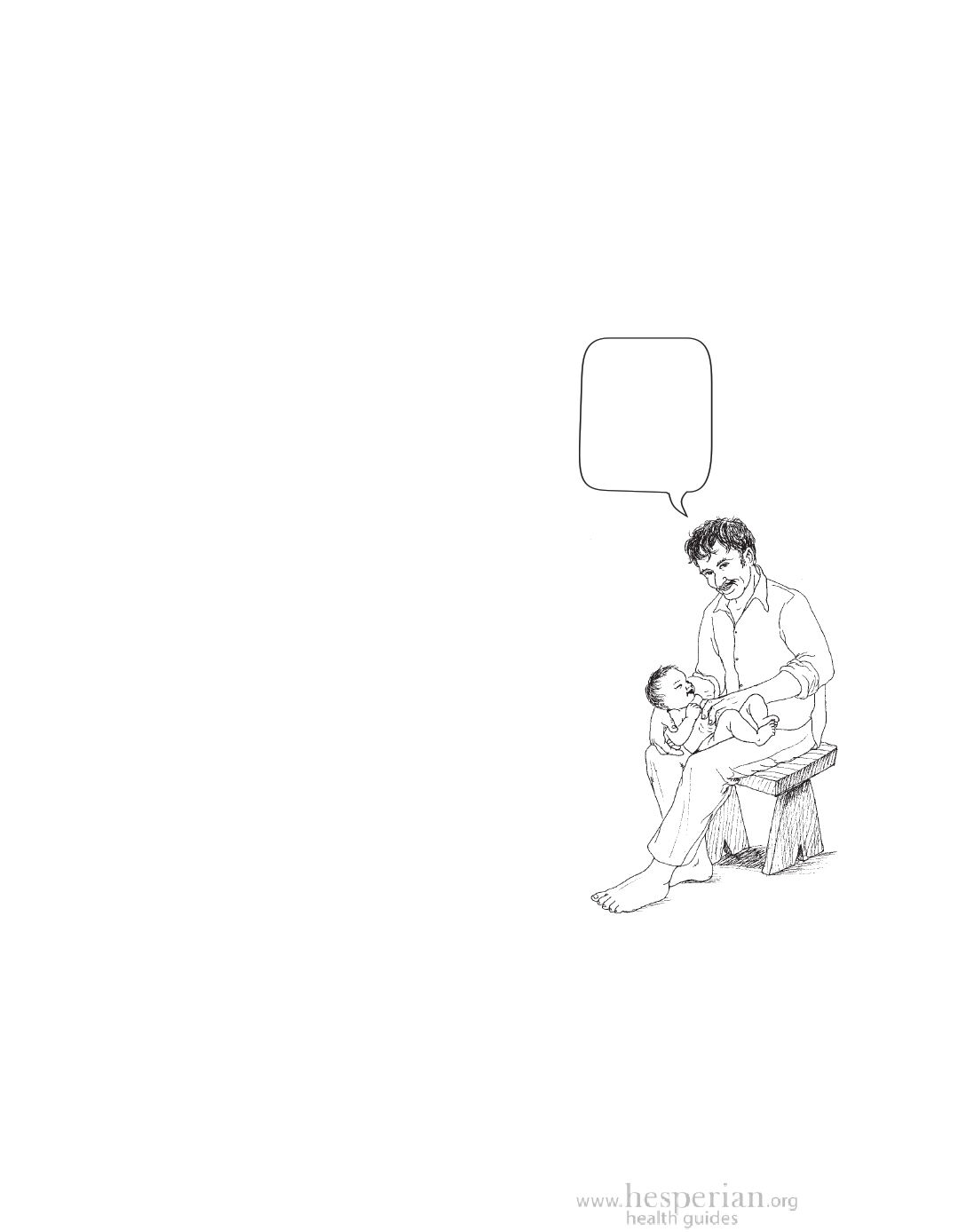
3 24 Ha r m fr o m Toxi c Ch e m i c a l s
Birth defects
Birth defects are caused by damage to a person’s genes. Because genes are
passed from parents to children, harm from toxic chemicals may affect not
only the person exposed to a toxic, but that person’s children and the children’s
children. Not all birth defects are caused by toxic chemicals, but birth defects
are more common in areas where industry uses or produces toxic chemicals
or wastes. Birth defects can take many forms, some very mild (such as a birth
mark) and others very severe (such as when the brain does not grow).
If your child is born with birth defects
If your child is born with birth defects, you may
feel overwhelmed and uncertain about how you
will care for your child. You are not alone!
Recognize your emotions. Parents experience shock,
denial, grief, and even anger. Allow yourself to
mourn the loss of the healthy child you thought
you would have. Talk about your feelings with
people who can understand and support you.
Within and
outside your
community,
there are
people and
resources to
help you.
Seek community support. Ask your health worker or
a social worker if they know other parents in the area
who have children with the same condition. Join or start
a support group with other parents. You and your child
may discover a large and caring community.
Celebrate your child. Remember to let yourself enjoy
your child the same way any parent would — by
cuddling, playing, and watching the child grow and
develop in his or her own way. Share your joy with
family and friends.
Learn with your child. Seeking information about birth
defects can be empowering, as can experiencing the
changes the child goes through as he or she grows.
Physical exercises may help. Many disabilities
can improve with the use of exercises and other
methods. (To learn about physical exercises and
other ways of helping children with birth defects and other disabilities, see the
Hesperian books Disabled Village Children, Helping Children Who Are Blind,
and Helping Children Who Are Deaf.)
A Community Guide to Environmental Health 2012